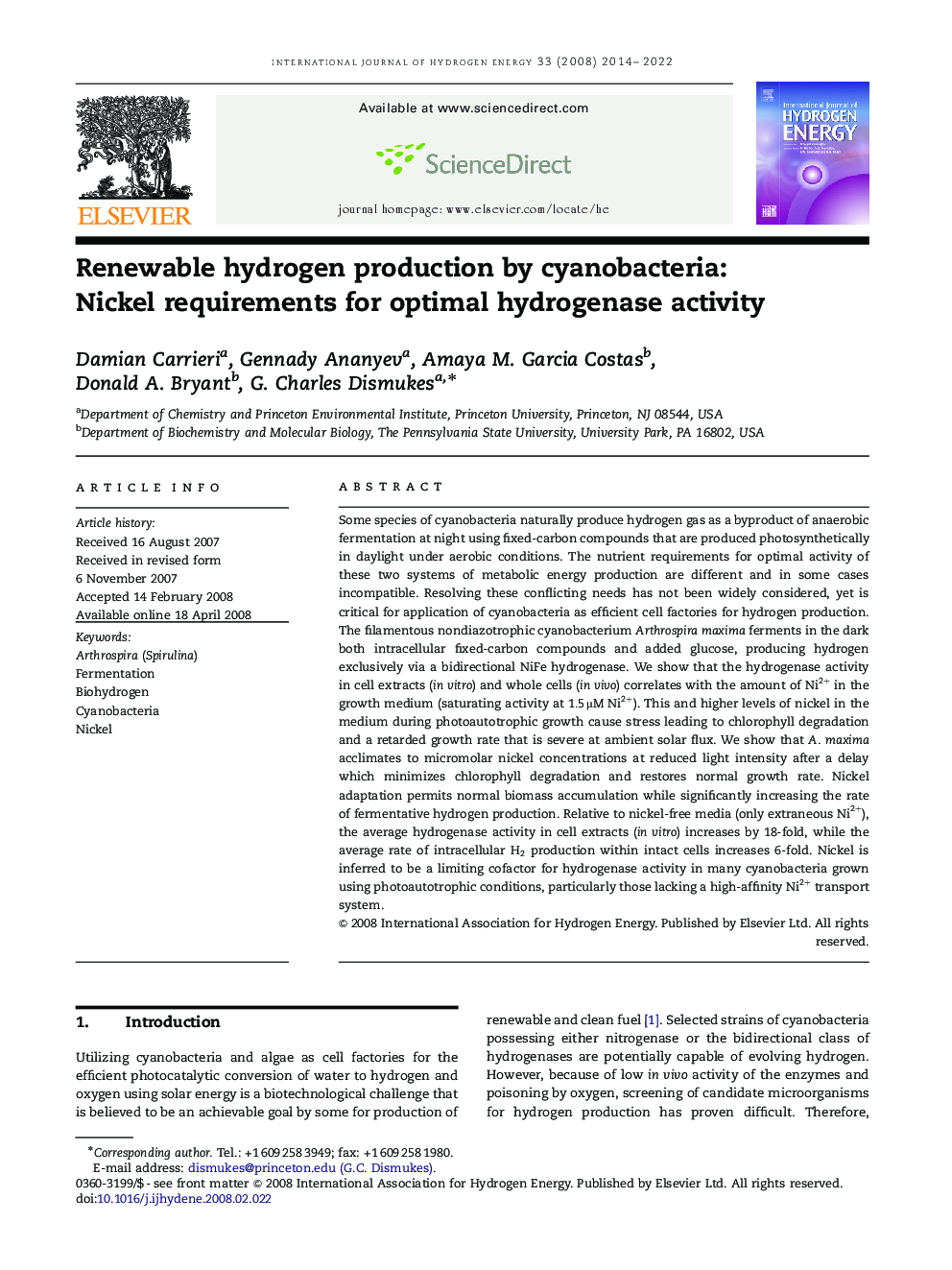| Article ID | Journal | Published Year | Pages | File Type |
|---|---|---|---|---|
| 1274486 | International Journal of Hydrogen Energy | 2014 | 9 Pages |
Some species of cyanobacteria naturally produce hydrogen gas as a byproduct of anaerobic fermentation at night using fixed-carbon compounds that are produced photosynthetically in daylight under aerobic conditions. The nutrient requirements for optimal activity of these two systems of metabolic energy production are different and in some cases incompatible. Resolving these conflicting needs has not been widely considered, yet is critical for application of cyanobacteria as efficient cell factories for hydrogen production. The filamentous nondiazotrophic cyanobacterium Arthrospira maxima ferments in the dark both intracellular fixed-carbon compounds and added glucose, producing hydrogen exclusively via a bidirectional NiFe hydrogenase. We show that the hydrogenase activity in cell extracts (in vitro) and whole cells (in vivo ) correlates with the amount of Ni2+Ni2+ in the growth medium (saturating activity at 1.5μMNi2+Ni2+). This and higher levels of nickel in the medium during photoautotrophic growth cause stress leading to chlorophyll degradation and a retarded growth rate that is severe at ambient solar flux. We show that A. maxima acclimates to micromolar nickel concentrations at reduced light intensity after a delay which minimizes chlorophyll degradation and restores normal growth rate. Nickel adaptation permits normal biomass accumulation while significantly increasing the rate of fermentative hydrogen production. Relative to nickel-free media (only extraneous Ni2+Ni2+), the average hydrogenase activity in cell extracts (in vitro ) increases by 18-fold, while the average rate of intracellular H2H2 production within intact cells increases 6-fold. Nickel is inferred to be a limiting cofactor for hydrogenase activity in many cyanobacteria grown using photoautotrophic conditions, particularly those lacking a high-affinity Ni2+Ni2+ transport system.
